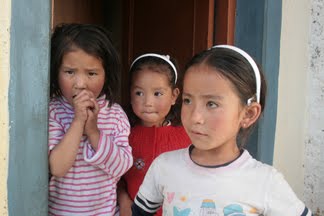Roof top Rain Water Harvesting for Rosemary & G. Viswanath
Address: N48, 9th B main, Jeevan Bhima Nagar, Bangalore 560075
House type: Row house
Roof area: 1000 sq feet/ 100 sq mts in two levels
Number of residents: 3 family members and 2 dogs
Nature of Water supply:
Connected to BBMP mains with 1 sump and a 1000 lts overhead tank. House is located at an elevation within the society. Mains subjected to illegal extraction with pressure pumps meaning often even on supply days sufficient water would not reach the sump. Regular need for tankers.
Date of Execution of RWH:
May 2008
Design Parameters:
1. Roof was being used to exercise the dogs, set them free for some time. Clients were not sure whether they could stop that altogether.
2. Clients were not confident enough in the first phase to direct water directly into the sump. Partly because of the dogs using the roof but also because the quality of rainwater collected would have to be tested first.
3. Strip of land available around the house for placing a tank was limited
4. The terrace was in two levels, with a smaller terrace being at the lower level
5. The whole terrace had 2 rain water down take pipes both on the same side of the house. Half the larger higher terrace flowed into the lower terrace, and then from there to the ground. The other half of the higher larger terrace had another downtake pipe at the back.
6. The costs seemed high and had to be controlled to make the venture economically viable.
Design:
The design could be divided into four parts,
1. A 500 litre tank on the smaller lower roof (to be used for a garden) into which the water from half the higher terrace flowed in. The overflow from this tank and the water from the lower terrace then flowed through the downtake pipe into the 200 litre filtration tank.
2. The other half of the higher terrace had its water flowing straight down to a 200 litre filtration tank.
3. A 2000 litre tank located on a slightly raised platform at the back that received water from the two downtakes via the 200 litre filtration tank.
4. A small recharge chamber, lined with bricks and about 3ft x 3ft, with a 5 ft depth into which overflow pipes from the 2000 litre tank were laid.
A first rain separator detail was part of both down take pipes
The platform for the tank was designed in a way that it enhanced the little space around it
Budget:
The precise budget for the Rain Water harvesting itself is difficult to determine because along with the RWH design some other minor civil and plumbing works were undertaken. However the cost could be put somewhere around Rs 45 - 50,000, including, material, labour, design and supervision.
The plumber had already executed Rain Water Harvesting on a earlier site. His previous knowledge allowed for a speedier execution.
Actual Design & Usage:
1. Considering that the height difference between the two terrace levels was not much we needed to have a rectangular 500 litre tank. Since it was going to be exposed to the sun it had to be black PVC equivalent of the commonly found rectangular white PVC loft tank. This had to be specifically ordered and took time. It has now been installed.
2. In the first year the water was primarily used to wash cars (the residents have two cars) and water their small garden. Also to wipe the floors and other washing.
3. Care was taken to keep the roof clean and stop the dogs from using the roof. However intermittent use of the roof by the dogs continued.
4. It was found virtually impossible to open the cap of the rain separator by the residents.
Water Quality:
In the month of November, at the end of the rain period water samples were taken for testing to State Ground Water Cell, Bangalore, Department of Mines & Geology, Government of Karnataka. The Chemical Analysis Report of Water Sample said “All the parameters are within the permissible limit”. Dr Shashirekha added verbally that the water sample was excellent.
This was followed by the Bacteriological analysis which said
Total Coliforms: 3.6 mpn/100ml
Faecal Coliforms: 3.6 mpn/100ml
Source contaminated, Not potable
This was obviously due to the usage of the roof by dogs. However the scientist in charge, Dr Shashirekha added verbally that the water was potable after boiling.
Present Scenario:
After the results of the test the residents are enthused to drain the water collected in the 2000 litre tank into the sump for daily use.






No comments:
Post a Comment